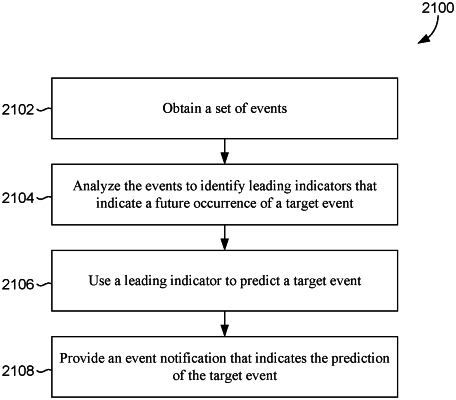| CPC G06N 5/04 (2013.01) [G06F 16/2465 (2019.01); G06F 16/26 (2019.01); G06N 20/00 (2019.01)] | 20 Claims |

|
1. A computer-implemented method comprising:
receiving an indication to initiate identification of leading indicators;
identifying a warning period of time that precedes a target event in a set of training events, the warning period of time comprising a period of time desired for reacting to a predicted target event;
identifying a search period of time that precedes the warning period of time, the search period of time comprising a period of time during which leading indicators associated with the predicted target event are identified via a leading indicator algorithm executed on a computing device;
searching a set of events, of the set of training events, that correspond with the search period of time, which precedes the warning period of time, to identify, via the leading indicator algorithm, a leading indicator associated with the target event;
using the leading indicator to predict a future occurrence of the target event; and
based on the predicted future occurrence of the target event, automatically initiating a computer action to minimize or avoid the target event.
|